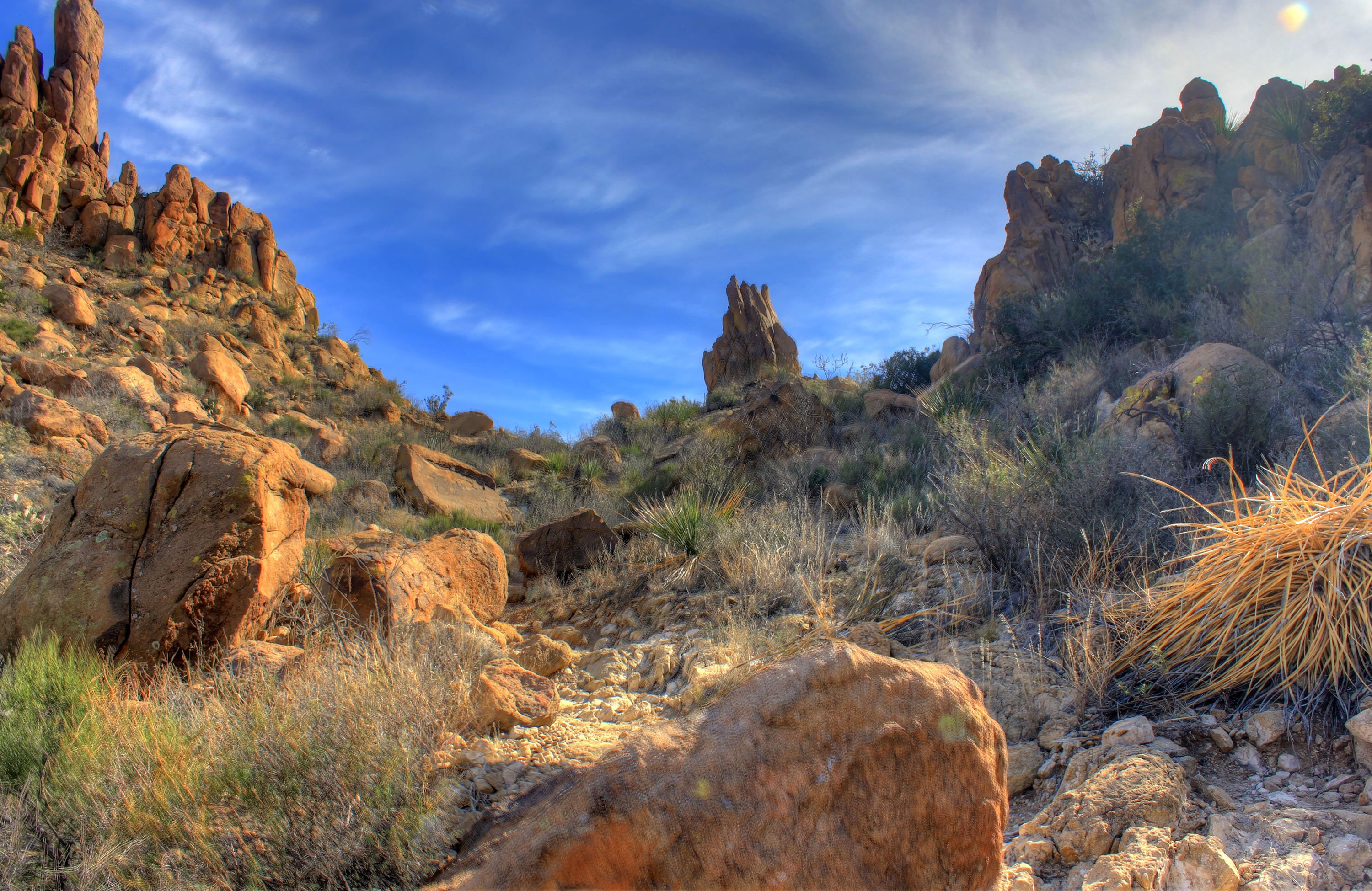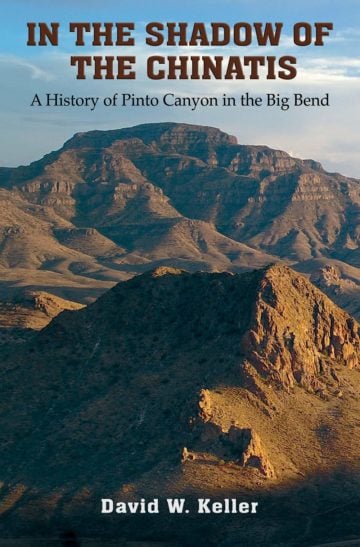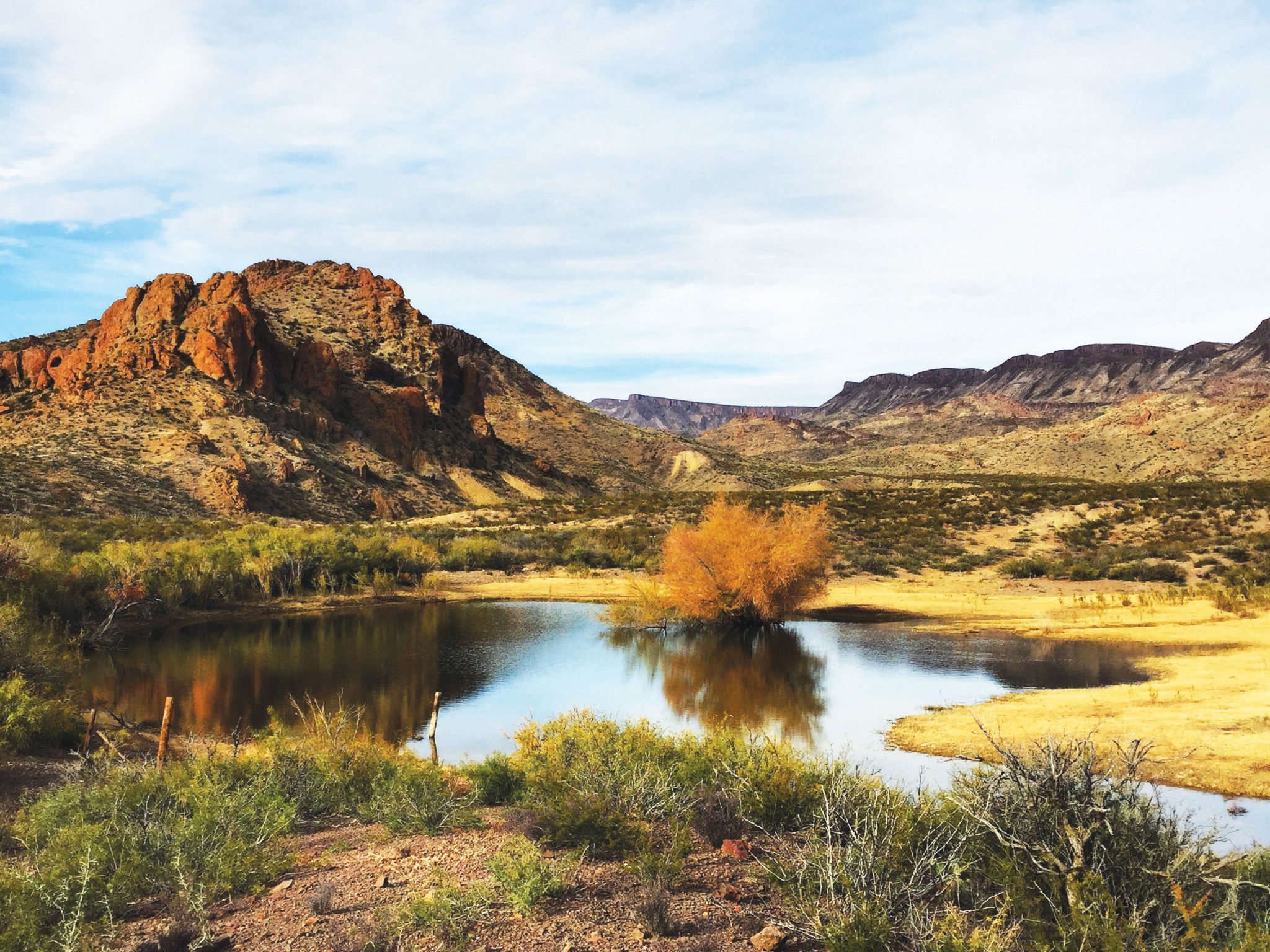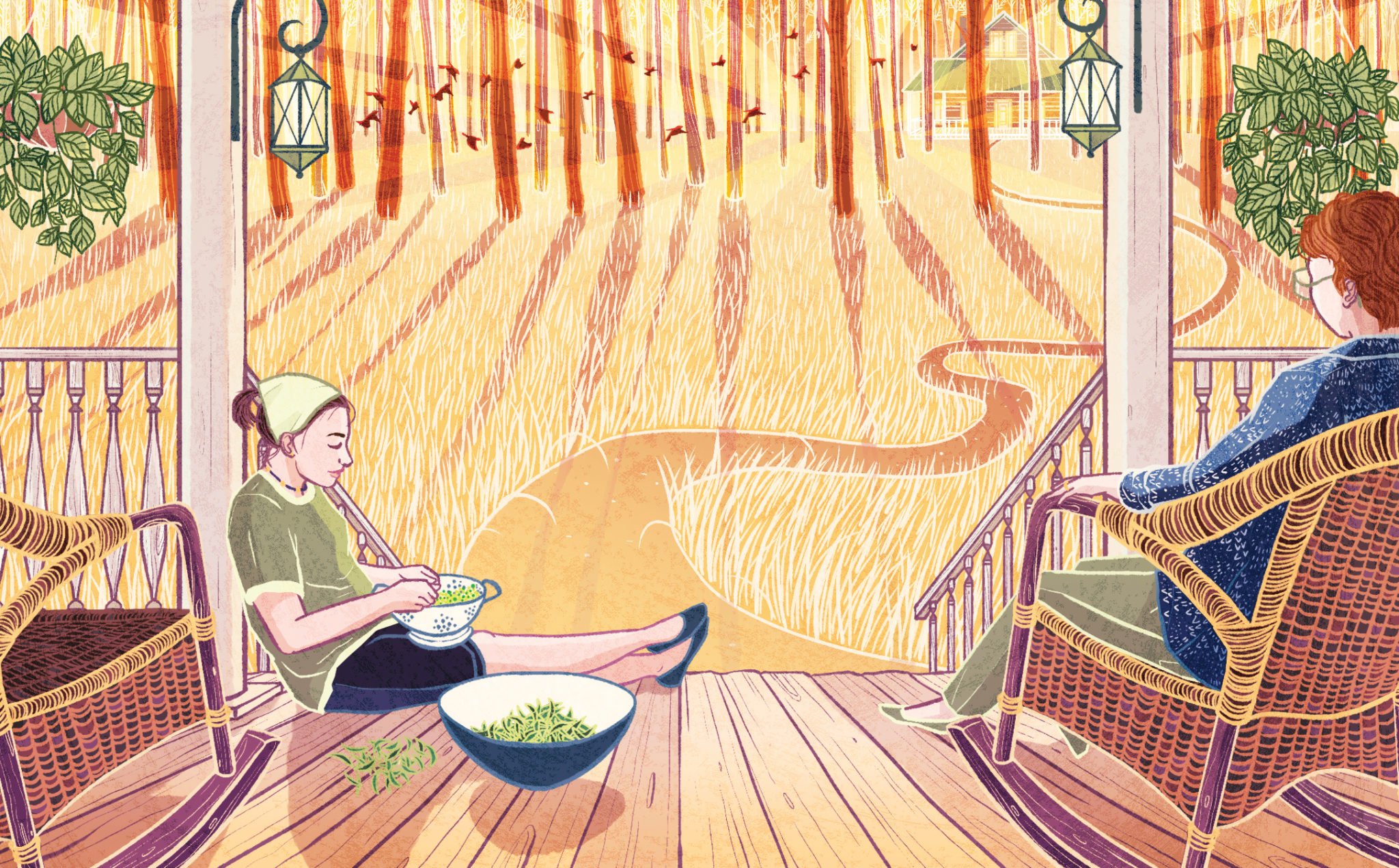
A Riveting New History of an Ancient West Texas Canyon
Like a cross-section of the desert, David Keller’s book reveals layers of overlapping history in the spectacular and rugged Pinto Canyon.
Above: Pinto Canyon’s first people, who arrived as early as 13,000 years ago, were hunters, followed by hunter-gatherers who made use of the region’s bounty of prickly pear and agave, roasting the succulents in earth ovens.
“Other than by foot or horseback, there are only two ways to get to Pinto Canyon,” writes David Keller in his latest book, In the Shadow of the Chinatis: A History of Pinto Canyon in the Big Bend. The first way is on a road that starts north of the small West Texas border town of Presidio. The second way is on the same road, only at its other end in Marfa.
“Locally famous, it is one of the most spectacular drives in the region,” Keller writes. The 15-square-mile canyon, located mostly on private land, is defined by Pinto Creek, which wends through the Chinati Mountains, continuing through volcanic intrusions and Cretaceous limestone dotted with sotol, creosote, and mesquite. To drive to Pinto Canyon is to commune with millennia of geology.

A History of Pinto Canyon in the Big Bend
By David W. Keller
Texas A&M University Press
$35; 368 pages
But there is more to this land than terrain. Keller, an archeologist at the Center for Big Bend Studies at Sul Ross State University, spent 11 years researching and writing about Pinto Canyon. Like a cross-section of the desert, his book reveals layers of overlapping history spanning from the violent bloom of mountains 33 million years ago to the equally dramatic travails of those who eventually lived in them.
Pinto Canyon’s first people, who arrived as early as 13,000 years ago, were hunters, followed by hunter-gatherers who made use of the region’s bounty of prickly pear and agave, roasting the succulents in earth ovens. Evidence suggests that semi-sedentary tribes such as the Tecolote inhabited rock shelters in the canyon but were pushed out by the Apache, who would make the Big Bend their domain.
But Keller spends the bulk of his book focused on the handful of families that represented some of the first residents of the region. Around the turn of the 20th century, shortly after the Legislature passed a law encouraging settlers to buy up to 5,000 acres of West Texas dirt, a surge of eager pioneers came to Pinto Canyon. What they perhaps didn’t realize is that their lives would become inextricably tied up in the fate of the land itself, as much bound to the volatile desert weather as to policy and economics. “A landscape is never simply a passive backdrop for the play of history, but here aridity and toppled topography conspire to force it center stage,” Keller writes. The settlers would watch their livestock die of thirst as “the Great Depression conspired with drought to bring even the hardiest ranchers to their knees.”
The settlers’ hardships were compounded by the political dramas that, in spite of Pinto Canyon’s remoteness, still managed to reach them. Pinto Canyon was at the frontlines of the Mexican Revolution—40 miles away, Pancho Villa would win a major battle in the Mexican town of Ojinaga, while the more immediate region was terrorized by local bandit Chico Cano—though it’s also likely that if it weren’t for the region’s rough terrain, the settlers might have suffered an even worse fate at the hands of bandits.
The Galveston, Harrisburg and San Antonio Railway reached West Texas in 1883. A host of towns sprouted along its route, including Marfa. But it was also along the railroad that the Spanish influenza eked its way into the canyon in 1918. Not long after, the 1929 Wall Street crash marked the beginning of the Great Depression. Although the effects of the Depression took time to arrive to this remote corner of the U.S., coupled with years of drought in the canyon, its impact was all the more devastating.
“The dense ash obscured the sun until no light could be seen aside from the glow of the molten rock and the flash of trees as they exploded into flame.”
“As a microcosm of the larger theater that was the Big Bend, Pinto Canyon’s tortured backdrop fittingly reflected the harsh drama that was to play out within its folds,” writes Keller. In the face of adversity, Pinto Canyon’s settlers persevered with much failure and some success. The community was home to one of the region’s only nonsegregated schools—more out of necessity than principle. But ethnic tensions quickly amped up with the financial strain of the Great Depression, ultimately resulting in the murder of an innocent man—the son of Mexican American settler José Prieto—at the hands of Texas Rangers. While the human drama unfolded within the canyon below, the Chinati Mountains towered over like silent witnesses.
Though his book is an academic work, Keller’s attention to prose and style is evident. “The dense ash obscured the sun until no light could be seen aside from the glow of the molten rock and the flash of trees as they exploded into flame,” he writes, describing the Plinian eruption 33 million years ago that would ultimately lead to the formation of the canyon.
Meanwhile, his portrayal of the families who lived there is touched with such care and heart, the reader only wants to see them succeed. Warning: The reader will be disappointed.
Today, the lives of Pinto Canyon’s landowners are vastly different. With the arrival of wealthy investors like A.J. Rod and Donald Judd, who earned their keep apart from the land, the 1970s “heralded a fundamental shift in land tenure in the canyon—from hardscrabble goat ranchers to absentee millionaires—one that would prove lasting,” Keller writes. Today, most of Pinto Canyon is owned by Jeff Fort, the retired CEO of security systems company Tyco (now Johnson Controls).
Amid these “epic stories of human triumph and tragedy, of trying to survive in a hostile and difficult land,” Keller reminds the reader, “in the end, only the land remains.”
READ MORE:
-
Feeling the Burn in Big Bend: An epic drought has scientists racing to predict the future of Big Bend’s unique sky islands.
-
‘The Hour of Land,’ Terry Tempest Williams’ Love Letter to National Parks: Trump’s attacks on public lands have given new urgency to Williams’ work.
-
Is Texas’ Overcrowded, Underfunded State Parks System Being Loved to Death? Texans love their state parks. But our state’s public lands are overcrowded and rapidly deteriorating. Maybe it’s time to take the long view.


